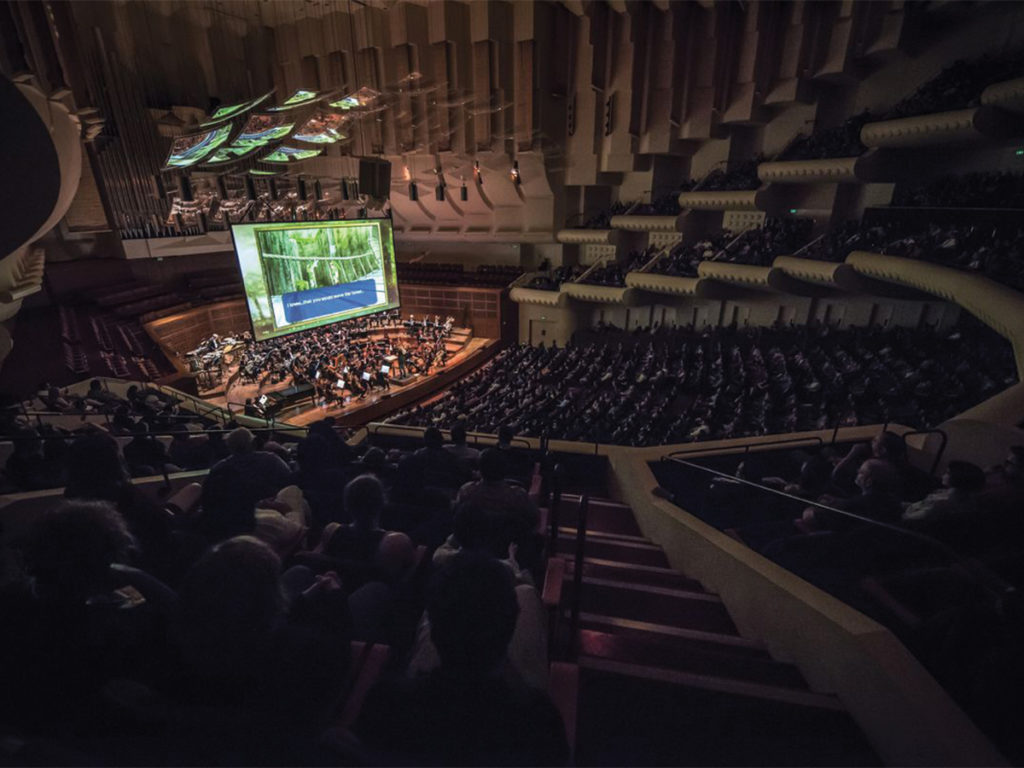
The film “Sonic the Hedgehog,” has the highest grossing opening weekend of any video game movie on record which may be attested to all its fanservice. The most touching of which comes near the end of the film, where a piano suite version of “Green Hill Zone” plays in the background. It was not enough that the movie had countless references to its video game source material; Jon Baptiste’s rendition of the theme to Sonic’s first level was the cherry on top that solidified the movie as a true adaptation. It served nostalgia well as my memories of Sonic and video games in general always began with the music. Video game music (VGM), as a whole, connects society with compositions of cultural and historical significance as well as musical styles that might have otherwise been unheard.
Video game themes and music are some of the most recognizable pieces of music pop culture has to offer. Nintendo has a wide array of identifiable music, but “The Legend of Zelda” may hold the most culturally significance. “Great Fairy Fountain” is easily recognizable as the file select music introduces a harp accompanied by a string arrangement that is totally mystifying. It signals to players that they are about to embark on a world of fantasy. Most importantly, VGM also serves as a bridge to a variety of different musical genres. “Great Fairy Fountain” itself is reminiscent of Chopin’s “Fantaisie Impromptu” which is a piece of music from the Romantic era. Halo, Xbox’s largest IP, has a main theme that begins with Gregorian chant. This music can be dated back to 500 A.D., yet contemporary listeners can identify Halo’s theme music by the chant alone. The importance of Halo utilizing the chant in its main theme is how a dying music becomes palpable again.
Like film, VGM brings the audience original pieces of music by hired composers. The difference is, where film is set as an absolute start to finish project, video games give players full control; this means the composers have to be more calculated about what music is going to accompany the player in a certain setting. The “Green Hill Zone” music was so recognizable in the Sonic film because of its constant looping and use in the first level of the iconic game, “Sonic the Hedgehog.” Plus, it’s a great piece of music that embodies the lush green and sea background of the Green Hill level. The cult classic game “Ico” utilizes a different approach. To accompany its fortress and dungeon landscape, “Ico” goes for a more natural approach to its soundscapes, using earthly sounds such as rushing water, birds and footsteps to aid the player on their journey. When “Ico” does play music, composer Michiru Ōshima goes for a medieval secular sound heard in the piece “Castle in the Mist” which utilizes lutes mixed with more modern melodies that create a serene escape. “Breath of the Wild” must have taken clear notes from “Ico” as that game replaces melodic sounds with more natural foley just as well. Very prevalent especially in earlier video games, was the usage of certain instruments to coincide with real world type settings. For its water levels, the “Super Mario” series often uses the higher octaves of an electric piano to create a more ethereal sound. For its desert Pyramid dungeon, “Dragon Quest III” goes for a stereotypical raga type song full of sitar and flutes.
Aside from original compositions, there are video games that have licensed soundtracks, such as the popular “Tony Hawk’s Pro Skater” series. Growing up around the heyday of the Tony Hawk series meant hearing songs people ripped straight from the games. The playlist’s mixture of punk and underground hip-hop was so potent that Dead Kennedy’s “Police Truck” is instantaneously connected with “Pro Skater 1.” Another video game, “Grand Theft Auto,” had original music, but as the game’s title suggests, driving stolen cars meant being able to listen to the in-game radio full of licensed songs. Rockstar implemented many in-game stations that each had their specific genres, which allowed players to dive into their personal tastes. “Grand Theft Auto IV” introduced the station Liberty City Hard Core (L.C.H.C.) which was the biggest surprise as the game really put a low-profile genre like hardcore punk into a high-selling game. “Rock Band” and “Guitar Hero” not only had licensed music, but these games placed the instruments in the players’ hands. It was a totally new and innovative way to appreciate the music by allowing perhaps non-musical people the chance to feel like real musicians. Most importantly, it gave kids the spunk to really pick up on guitar or drums and get involved in the musical scene.
VGM has truly traversed boundaries of time and space by giving players some of the most easily identifiable pieces of music. VGM is so popular that even now, orchestras are being commissioned to perform symphonies of the music. “The Legend of Zelda” symphony performs every now and again while just last year the “Assassin’s Creed” symphony performed a tour in the United States. Orchestral music in itself is not in the shining light, yet VGM gives it a new life to those who may have never listened otherwise. With this sort of potency, the music will continue to live on in the hearts and ears of players.








